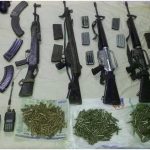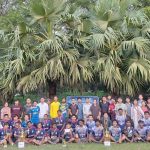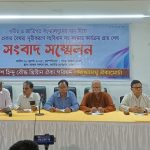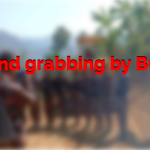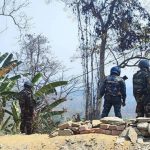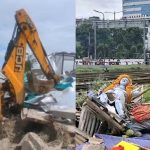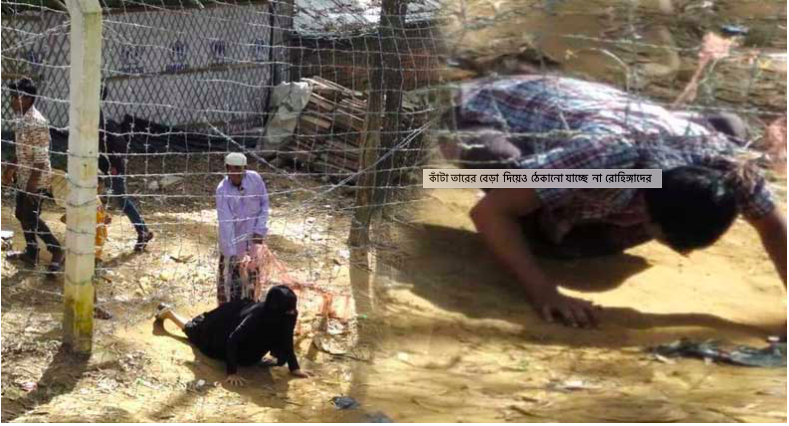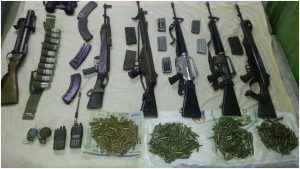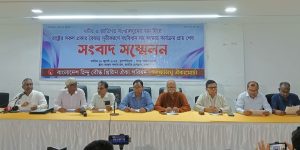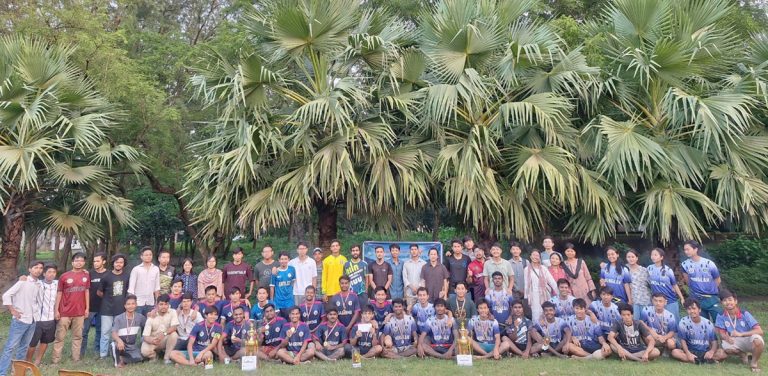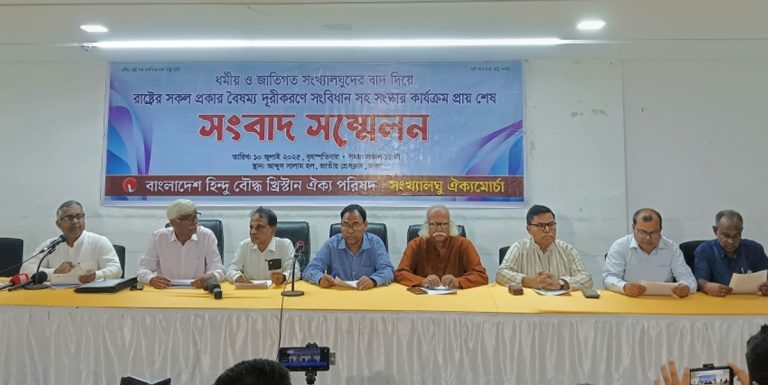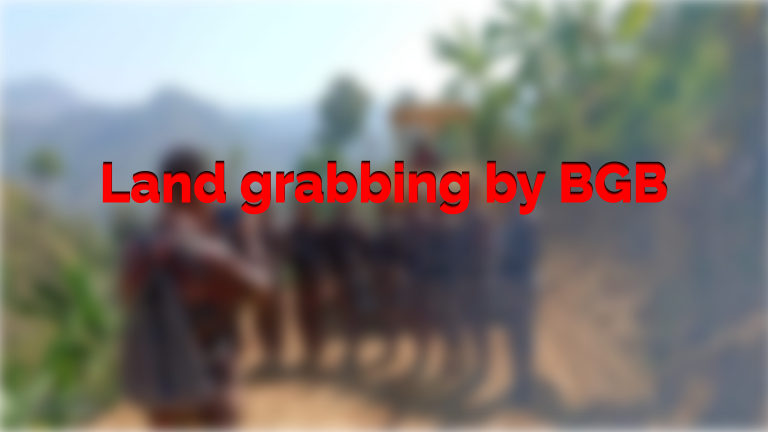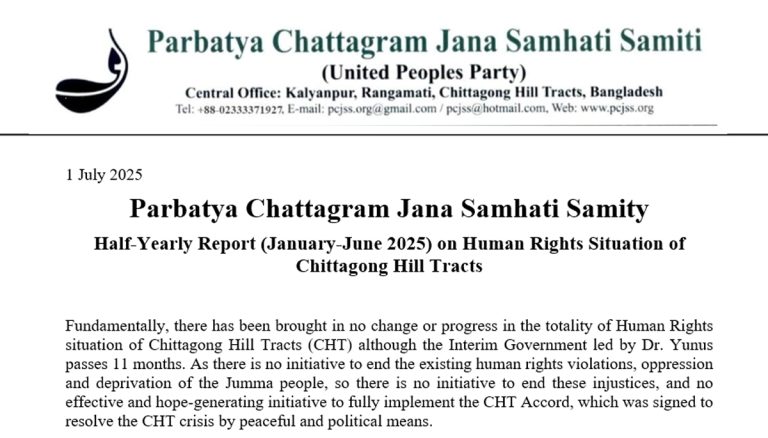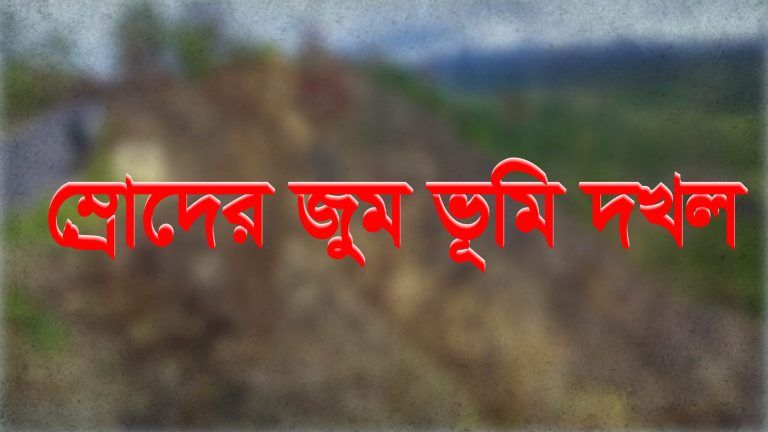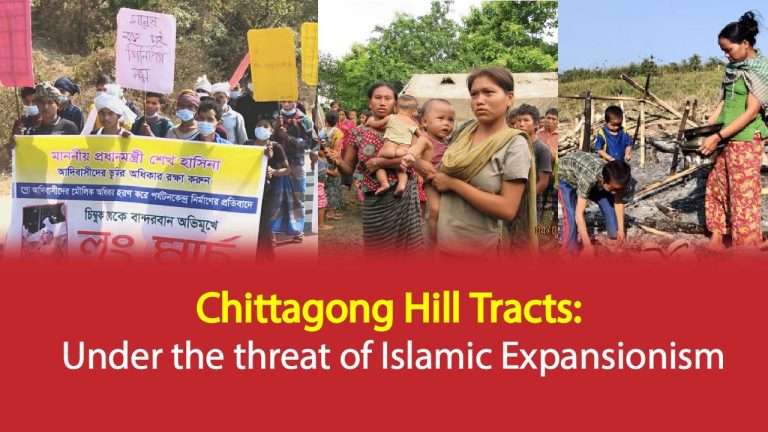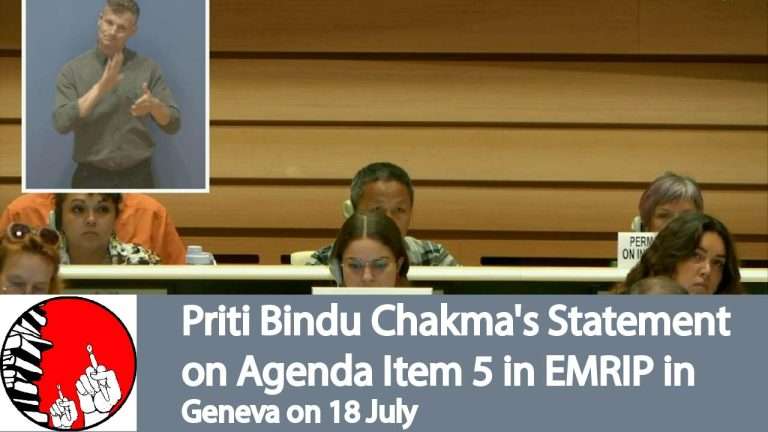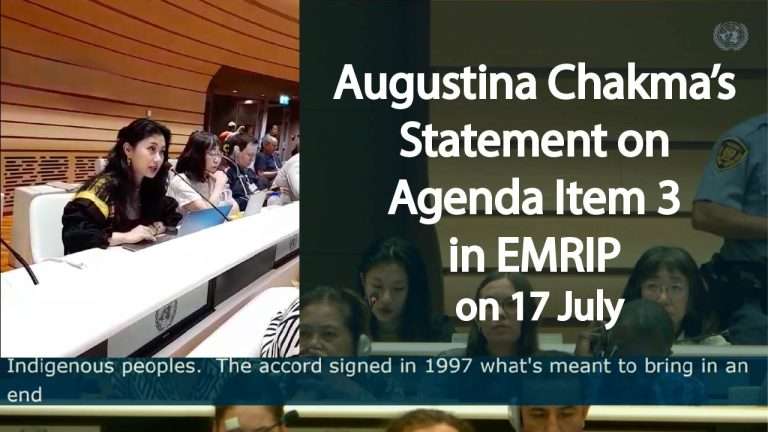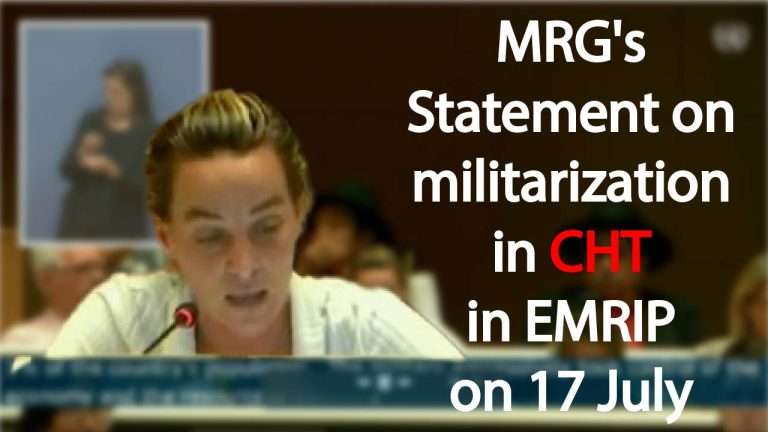Mitul Chakma Bishal
Rohingya Crisis:
In 2017, millions of Rohingyas entered Bangladesh due to violence in Myanmar’s Arakan State and were granted refugee status by the Bangladesh government. On the morning of 25 August 2017, the Arakan Rohingya Salvation Army (ARSA) launched a simultaneous attack on 30 army and police posts in Myanmar. After the attack, the Rohingyas started flocking to the border of Bangladesh in the wake of the Myanmar army’s crackdown. Earlier, some of the Rohingyas who had entered Bangladesh in the late seventies and nineties were repatriated by Myanmar under various diplomatic pressures, but most remained in Bangladesh, most of whom are now in power in various political parties.
A camp for around 15,000 Rohingya refugees was set up in 1991 in the Kutupalong area of Ukhiya upazila in Cox’s Bazar, bordering Myanmar, by cutting down hundreds of acres of forest land. From the very beginning, the locals were reluctant to give shelter to the Rohingyas, as giving shelter to so many Rohingyas would adversely affect the geographical, social, cultural and economic spheres of the area.
From the beginning, the locals complained that if they did not get enough work, the Rohingyas would be involved in various misdeeds, even militant activities, drug smuggling. Moreover, when so many children do not get the opportunity to study, then naturally they will be in danger and get involved in juvenile delinquency.
In 2012, a gathering and human chain was held near the refugee camp under the banner of the Rohingya Infiltration Prevention and Repatriation Movement Committee led by the locals. The group has been campaigning since 2009 to repatriate illegal Rohingya to Myanmar. The Convener of the organization, Hamidul Haque Chowdhury, principal of Ukhiya Bangamata Begum Fazilatunnesa Mujib Mahila College, said that at present more than four lakh Rohingyas are living illegally. In addition to occupying the country’s labor market, they are involved in drug trafficking including yaba, theft, robbery, snatching, arms trade and militant activities. Due to this, the existence of Cox’s Bazar, the safety of public and tourist city of the country, is under threat. Now a local and foreign clique is conspiring to bring a few lakh more Rohingyas to Cox’s Bazar.
Noor Mohammad Sikder, Member-Secretary of the organization, complained that by entering Myanmar, some trained Rohingya cadres from the Kutupalong camp colluding with the Arakan Rohingya Solidarity Organization (RSO) and the Arakan Rohingya Islamic Front (ARIF) are inciting communal riots and making Rohingys compelled to infiltrate in Bangladesh. Their objective is to establish Cox’s Bazar as a Rohingya state by occupying the land of Cox’s Bazar and gathering more than one million Rohingyas (Prothom Alo, 23 July 2012).
The headline “Rohingya rebel tiger forces in deforestation of Ukhiya” published in “Teknaf News” on 21 January 2016 said that a group of 50-100 Rohingyas armed with various weapons entered the forest and cut down small and big trees day and night. With this, forest workers and social forestry partners have become helpless.
According to a report published by Jugantor on 12 September 2018, the Rohingyas are involved in various crimes including murder, kidnapping, rape and drugs in the Rohingya camps due to the previous hostilities, internal conflicts and expansion of domination. Such behavior of the Rohingyas has left the local people and the administration in a state of anxiety. According to the sources, the crime is increasing in the Rohingya camps due to internal conflicts among themselves. In one year, more than 400 crimes including 22 murders of Rohingyas have been registered in Ukhiya-Teknaf police station. The locals are also afraid of various crimes of Rohingyas including murder, drugs and present of weapons.
Rohingyas do the main work of bringing yaba from Myanmar to Bangladesh. Those who make yaba in Myanmar are contacting the Rohingyas in the camps in Bangladesh so that they can go and get yaba. After that, they spread inside the country through various Bangladeshi gangs. Several Rohingyas have been arrested and jailed for their involvement in yaba trafficking.
At least 20 Rohingyas were killed in a gunfight with the BGB in January-June 2019. Most of them are involved in human trafficking (BBC, 25 June 2019). On 6 September 2019, the BD Journal headlined “As many misdeeds of Rohingya” as Malaysian security forces arrested four people on suspicion of planning multiple terrorist attacks last Ramadan. Two of the detainees were Rohingya. Police said the four were planning to kill many people and carry out terrorist attacks in and around Kuala Lumpur during Ramadan.
The Rohingyas also attacked four people, including three German journalists, in Ukhiya of Cox’s Bazar, in February of the same year for allegedly abducting a mother and two infant daughters. During the attack, journalists’ vehicles were vandalized and looted.
News of Rohingyas being involved in various crimes including attacks and killings has been revealing since 2017. Teknaf and Ukhiya police recorded at least 30 incidents of Rohingya crimes in a month that year. At least two policemen were injured in the attack.
Recently, police said 33 Rohingyas had been killed in “gun battles” with law enforcement in the Cox’s Bazar area in the past two years. Police claimed that the victims were involved in various crimes. In the last two years, 43 people have been killed inside the camp. Two Rohingyas were killed in a shootout between two groups at a Rohingya camp on 3 October 2020. Another 15 people were injured in the incident.
Many are also taking advantage of the helplessness of Rohingyas. As a result, many Rohingya girls are involved in prostitution in Cox’s Bazar. Some are willingly, some are reluctantly involved in this profession. Rohingya girls are working as sex workers in some cheap hotels in Cox’s Bazar.
On 11 September 2020, the Bangla Tribune reported, “No one knows when the Rohingya crisis will be resolved. In addition, the various crises and problems created locally by the Rohingya are becoming more complex. The Rohingya are involved in drug and human trafficking, robbery and various terrorist activities.”
Numerical variation:
According to the Ministry of Home Affairs and Ministry of Disaster Management and Relief, the current number of Rohingyas from Myanmar is 11 lakh 17 thousand 57 people. This account is until 28 May 2020. But investigation of The Daily Star has revealed that the number of Rohingyas in the Rohingya camps in Ukhiya and Teknaf in Cox’s Bazar has dropped to 860,000 in the last three years, despite the birth of about 76,000 children. According to the Inter-Sector Coordination Group (ISCG) the Rohingya population at the end of 2018 was 957,000. As such, Rohingyas are spreading from the camps to different districts and upazilas of Bangladesh.
The July 2020 report found that the total number of Rohingya refugees in all the camps was 860,494. They released a preliminary report on 16 September 2017, following the violence in Myanmar’s Rakhine state in August 2017 and the influx of refugees. According to the preliminary report, about 480,000 Rohingyas came to Bangladesh in one month and before that about 212,000 Rohingyas were living in Cox’s Bazar area. According to a report published by the ISCG titled ‘Joint Response Plan for the Rohingya Humanitarian Crisis 2019’ published in December 2018, after 25 August 2017, 745,000 Rohingyas came to Cox’s Bazar.
On 28 September 2018, at the 73rd General Assembly of the United Nations, Prime Minister Sheikh Hasina said that there are 1.1 million Rohingya refugees in Bangladesh.
According to the news published in Bangla Tribune on 11 September 2020, since 25 August 2017, 741 thousand 741 Rohingyas have come to Bangladesh from Myanmar and taken shelter. There are also 39,841 orphan children seeking asylum. More than 30,000 children are born among asylum seekers every year. Every year more than 35,000 women become pregnant. About 10,000 acres of land in Bangladesh is being used for Rohingyas. Six and a half thousand acres of land has been allotted for the new Rohingya camp alone.
Rohingyas spreading:
The Rohingyas are now spreading beyond the Cox’s Bazar refugee camp to different districts and upazilas of Bangladesh. They are getting the national identity cards of Bangladesh in exchange for money. They are getting these documents with the help of influential local leaders. As a result, they are migrating from Bangladesh to different countries using Bangladeshi passports. On 11 December 2019, two officials of the Election Commission (EC) were arrested from Badamtali junction of Double Mooring Police Station in Chittagong on charges of giving NID to Rohingyas in exchange for money. Besides, a case was filed against 8 people including 4 employees of the EC alleging transfer and transfer of Tk 6,783 thousand 296.
In the 17 months from 24 August 2017 to December 2018 alone, members of the law enforcement agencies have brought around 57,000 Rohingya from different parts of the country to the camps. Recently on 09 September 2020 Border Guard Bangladesh (BGB) detained 7 Rohingyas from Benapole of Jessore during illegal entry into India (Daily Star, 10 September 2020).
Rohingya in CHT:
As the Bandarban district of the Chittagong Hill Tracts (CHT) is very close to Myanmar and Cox’s Bazar district, Rohingyas have been infiltrating there for a long time. Especially in Naikhyongchhari, Lama, Alikadam and Bandarban Sadar upazilas, Rohingyas are now staying. They also have Bangladeshi national identity card in their hands. They are now citizens of Bangladesh under the shelter of some influential people in this area. Local public representatives have been helping the Rohingyas to get national identity cards in exchange for huge sums of money. As a result, they are now enjoying various government facilities. There are also allegations that Rohingyas are being included in the voter list to be used as vote bank during elections.
In the last seven to eight years, around 500 Rohingya families have settled in Alikadam upazila of Bandarban. There is even a village called Burmaiya (Burmese) Para in Alikadam. Ukyanue Marma, chairman of Suwalak Union in Bandarban Sadar Upazila, said, “Before 2006-2007, there were no Rohingya families here. But now more than 200 Rohingya families are living in this union. Among them, around 50 Rohingya families are also registered in the voters’ list.
A search of the Ghundhum Union chairman’s office in Naikhyongchhari revealed that they had a list of around 500 Rohingya voters, which they carefully kept in a separate file. Although ward members recommended the removal of these voters from the list, Ghundhum Union Chairman AKM Jahangir Aziz did not take any action to cancel them.
In the first week of June 2020, Rohingyas fled Cox’s Bazar after breaking the coronavirus lockdown and entering Bandarban district freely. They took shelter in a neighborhood called ‘Paingsi Ghona’ in Kalaghata of Ward 3 of Bandarban Municipality. A Rohingya village called Rupnagar next to Pingsi Ghona was inaugurated by the Minister for the CHT Affairs Bir Bahadur himself a long time ago.
On 01 June 2020, armed Rohingya robbers had a gunfight with the BGB in the Baishphari area bordering Myanmar in Ghumdhum Union of Naikhyongchhari. There are camps and training centers for Rohingya Muslim armed militant groups like ARSA, RSO, Alikan etc. in the border area of Naikhyongchhari.
A total of 120 Rohingya families have been found in 7 upazilas of Rangamati district. There are 15 families in Rangamati municipality, 72 families in Kaukhali upazila, 11 families in Kaptai upazila, 13 families in Bilaichhari upazila, 3 families in Rajasthali upazila, 5 families in Longadu upazila and 1 family in Barkal upazila.
58 Rohingya families have been found in different upazilas of Khagrachhari district. There are 30 families in Manikchhari upazila, 15 families in Mahalchhari upazila, 5 families in Guimara upazila and 2 Rohingya families each in Ramgarh, Dighinala and Khagrachhari Sadar.
CHT Problems and Rohingyas:
One of the issues in the Chittagong Hill Tracts (CHT) is the land problem. In various ways, state forces, government, non-government and private actors are occupying the lands of the Jumma people. Occupying land in the name of development, infiltration of outsiders is taking place there. The Jumma people are being deprived of their traditional land rights due to occupying thousands of acres of their land in the name of social forestry, rubber plantations and horticulture plots. By occupying the mouza land / Jum land in the name of tourism, by hindering the way of Jumma’s livelihood, the Jummas are being turned into a refugee community. The recent influx of Rohingyas into various parts of Bandarban has further complicated and clouded the situation. A section of vested quarters is giving Rohingyas a chance to live in this area for their own ulterior motives.
In Bandarban, especially in Lama, Alikadam and Naikhyongchhari upazilas, influential land grabbers are using Rohingyas to evict Jumma people from their lands at different times and many more Jum farming families are in fear of eviction. In 2016, an influential person named Shahidul Islam in Chhota Kalar Jhiri area of Lama Upazila was accused of using Rohingyas to occupy the Jum land of 82 Mro families in the area. It is alleged that a Rohingya named Rashid Ahmed went to the area to occupy land of the Mro people in exchange for money. Rashid said Shahidul took about 20-25 Rohingyas there and arranged for them to stay, so that Mro people were forced to leave the place for fear. The details were published in The Daily Star’s report titled ‘Mro life turned upside down’ on 29 May 2016.
Rohingya settlements have sprung up on the tops of Bichamara, Baganghona and Thandajhiri areas of Naikhyongchhari Sadar Union. Drug trading is going on openly in these settlements. By purchasing land from an influential person in the same area, they are conducting their activities in a much safer position.
As a result of harassment and threats by Rohingya robbers in 2018, the Chak people had to leave Satgharya village. A few years ago, 15 families of the Chak community were evicted from their ancestral village in Badujhiri of Naikhyongchhari, as a result of threats and harassment by land grabbers and Rohingya robbers. At least 20 Marma and Tanchangya villagers have been killed by Rohingya armed groups in the Naikhyongchhari area in recent years, according to local sources.
Rohingya armed militants like RSO, ARSA and Alikan are smuggling yaba and various drugs and gold from Myanmar through pillars 39-41 of Bangladesh-Myanmar border in Naikhyongchhari upazila. They bring all these goods to Bangladesh and sell them to local traders in Naikhyongchhari.
Although the CHT cover one tenth of the area of Bangladesh, the amount of cultivable land here is very low. On the other hand, as a result of construction of Kaptai Dam, around 54,000 acres of land has been submerged. As a result, a huge volume of displacement has taken place and people have been forced to take shelter in various forests during this time. Many have left the country or moved to a foreign land. On the other hand, in the 80’s, the geographical and demographic changes of the CHT were brought about by the settlement of Muslim Bengalis from the plains in CHT.
The nefarious plan of implementing the blueprint to turn the non-Muslim inhabited CHT into Muslim inhabited region was started. Since there was not enough arable land and habitable land, settlers were provided settlement by occupying the land of Jumma people. As a result, the entire CHT was plunged into a conflict situation. By letting a helpless class against the Jumma people, the claws of violence have been laid in the hills. The air of this region has been polluted by spreading the poison of communalism. The remnants of which have not yet been stopped, outsiders are still being infiltrated and rehabilitated in the traditional and traditional occupied lands of the Jumma people.
The Rohingya crisis is still an ominous signal for the CHT. The fear cannot be dispelled that at some point these Rohingyas will also cause horrific incidents in the CHT under the auspices of Muslim Bengali settlers. Because even though the state did not directly rehabilitate the Rohingyas in the CHT, but with the help of influential leaders of the local Awami League, BNP and Jamaat-e-Islami, they are now becoming Bangladeshi citizens. Under the pressure of rehabilitated settlers in the past and present, the permanent residents of the hills are drifting towards an uncertain future. At the moment, the infiltration of the Rohingyas into the CHT, the Islamization of the CHT, and the Bengalization appear to be a new conspiracy.
The Rohingya camps have been closely monitored, although such statements have been made by the state and law enforcement agencies, but it is important to consider how the Rohingyas are spreading in the CHT as well as throughout Bangladesh. On 24 October 2017, a news item was published on Deutsche Welle (DW) under the headline “Under pressure of Rohingyas, Hills, Hillmen are in danger of disappearing”. In the news, the permanent residents of different upazilas of Bandarban district have expressed concern that something may not be happening now. But where is the guarantee that it will not happen in the near future?
This fear is even more pronounced as the giant Rohingya refugee camp is very close to Bandarban. If we look at the reports published in various media now, we can understand the truth of that fear. Rohingyas are constantly involved in criminal activities. Even though the state gave shelter to the Rohingyas on humanitarian grounds, the CHT Accord signed in 1997 is still in limbo. Naturally, the question arises in the minds of the locals that the state has no concern for the basic human rights of the Jumma people in the CHT region, which have historically been ruled by special administrative arrangement for centuries. But the much humanity towards the sudden influx of Rohingyas is not an indication of anything conspiracy! Without drying the blood stains of the past of the CHT, will the state again impose the Rohingyas on the CHT with a mean object! The question remains.
Source: Data collected from PCJSS Archive, various national and online dailies and news channels including Hill Voice.
Translated by the Hill Voice from Bangla.
